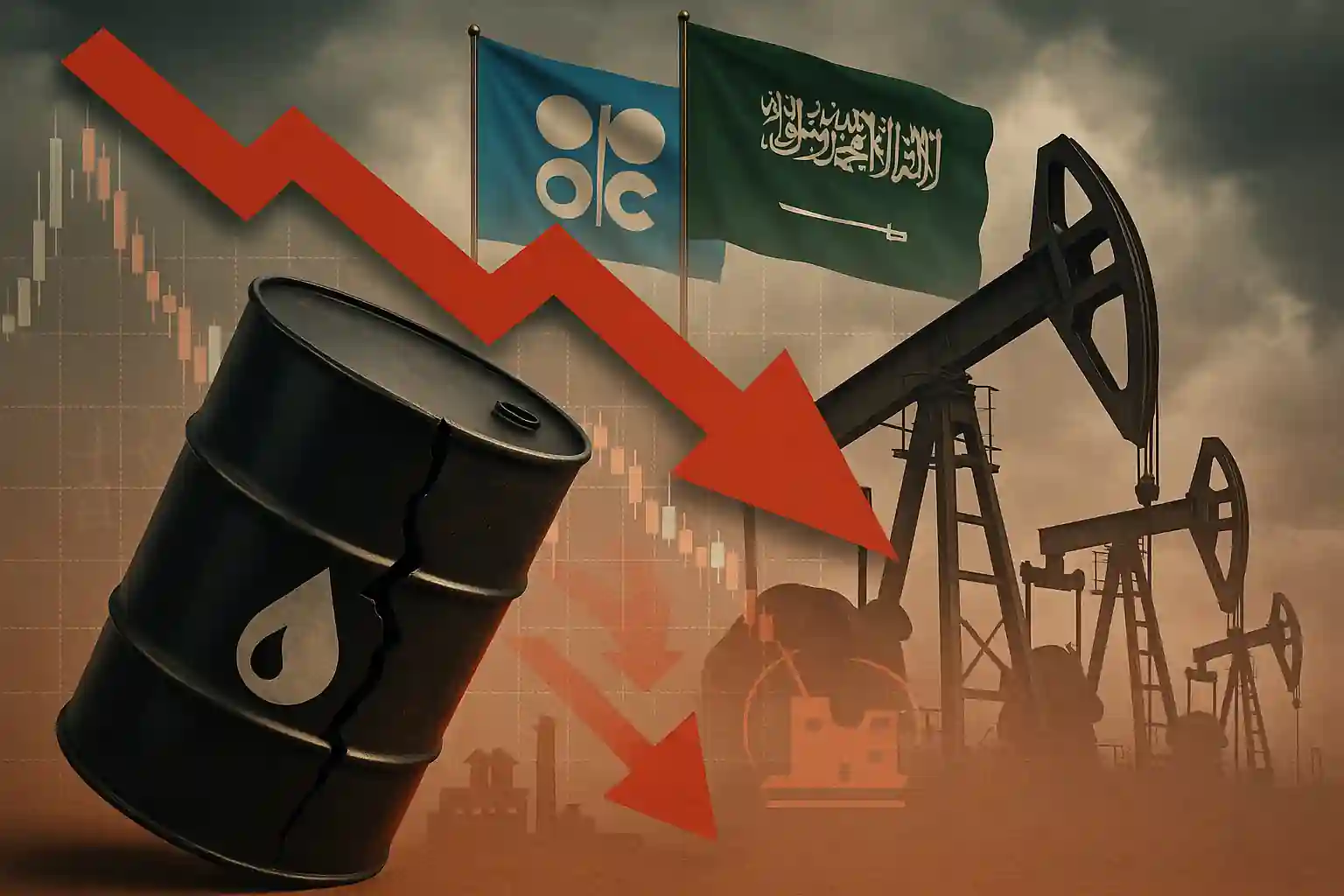Oil falls below $60 amid rising output concerns
Oil dropped under $60 per barrel for the first time in three weeks. This sharp drop in oil prices followed reports that Saudi Arabia may push OPEC+ toward a long-term production boost. West Texas Intermediate (WTI) declined as much as 4.2% on Wednesday, capping its steepest monthly fall since November 2021.
The fall in oil came after Reuters revealed that Saudi officials told allies they are prepared to endure lower oil prices. This signals a shift in strategy for the kingdom, aiming to maintain or even raise oil production in the face of weaker markets.
OPEC+ may trigger prolonged oil supply surge
Oil markets were already jittery over OPEC+’s decision to increase oil supply. In early April, the group announced a surprise hike of 411,000 barrels a day starting in May. This unexpected oil policy move shocked markets, causing a price dip and fears of oversupply.
Now, concerns are rising that Saudi Arabia may influence OPEC+ to agree on another supply surge. Analysts suggest this could reflect a repeat of the 2020 strategy—flooding markets with oil to maintain dominance.
Rebecca Babin, senior energy trader at CIBC Private Wealth, said the Saudi move suggests a permanent shift. “This confirms market fears that Saudi Arabia’s unwinds were not temporary,” she added.
Analysts predict global oil surplus
Investment banks are revising their oil outlooks. Morgan Stanley expects a “meaningful surplus” of oil if production increases continue. JPMorgan Chase warned that OPEC+ could accelerate planned oil output hikes during next week’s meeting.
The potential glut isn’t limited to OPEC+ alone. Non-OPEC producers like Canada and Guyana are also expected to boost oil supplies. This could further pressure global oil prices and deepen fears of an oil oversupply crisis.
Demand outlook weakens with global economic data
While oil supply appears set to rise, demand is showing signs of weakening. Hopes for a quick resolution to U.S.-China trade tensions are fading. This has clouded the short-term oil demand forecast.
The U.S. economy shrank for the first time since 2022 in the first quarter. Analysts blamed a surge in pre-tariff imports and softer consumer spending. Lower economic activity often translates into lower oil consumption.
In China, factory activity hit its lowest point since December 2023. The contraction highlights damage from the prolonged trade dispute. Weak manufacturing suggests that oil demand from China may also dip in the coming months.
Geopolitics adds pressure on oil trade
Former U.S. President Donald Trump made strong remarks on the trade dispute. In an interview with ABC News, he defended steep tariffs on Chinese exports. He also warned that Chinese products were not welcome unless trade was fair.
Such rhetoric fuels uncertainty in global trade and energy markets. If trade tensions escalate, the oil market could face additional demand shocks.
In this environment, oil remains volatile. Falling prices, rising output, and softening demand may define the coming months for global oil markets.




